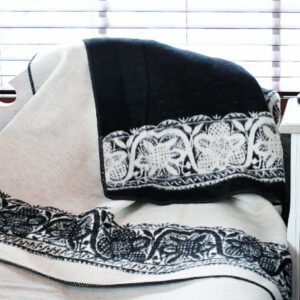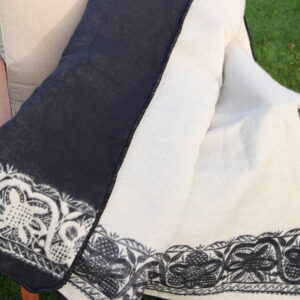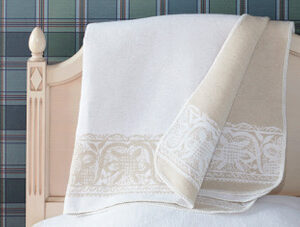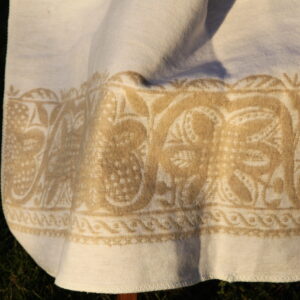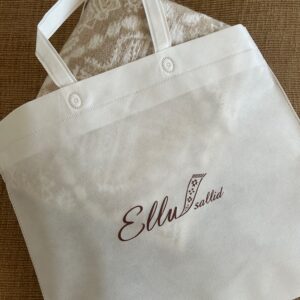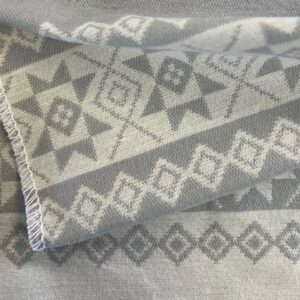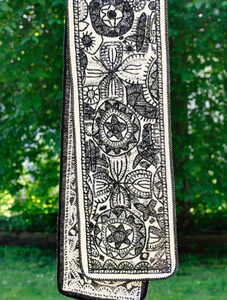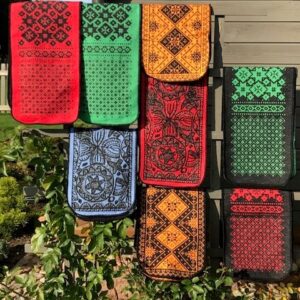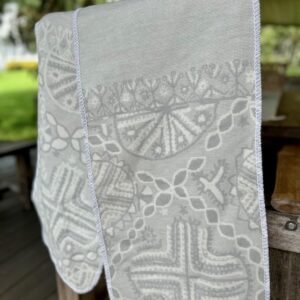+ Näita rohkem
-
Ellu sallide kinkepakend kannab endaga salli lugu.Pakend annab hea võiamluse sall kingitusena kinkida. Pakend on tehtud spetsiaalselt nii, et see oleks loodust ja ühiskonda säästev. Pakendi on mõõtudes 330x300x80mm. Ja selle hind on 5€. Anna meile oma soovist teada, kui teed läbi e-poe tellimuse või soovid juba soetatud sallile pakendit.
-
Dimensions 105 x 180 cm 70% cotton, 30% flax In Pärnu County, wrap from fine wool and as big as blankets were thrown across one’s arm when going to church. This is where the name comes from – On-Arm Plaid. At large, the wrap was being worn across one’s shoulders. The characteristic of Estonian folk costumes is expressed in beautiful embroidery. Pärnumaa scarf has coif embroidery with original ornament where black woollen yarn is used.
-
Dimensions 145 x 200 cm 70% cotton, 30% flax In Pärnu County, wrap from fine wool and as big as blankets were thrown across one’s arm when going to church. This is where the name comes from – On-Arm Plaid. At large, the wrap was being worn across one’s shoulders. The characteristic of Estonian folk costumes is expressed in beautiful embroidery. Pärnumaa scarf has coif embroidery with original ornament where black woollen yarn is used.
-
Dimensions 75 x 180 cm 70% cotton, 30% flax In Pärnu County, wrap from fine wool and as big as blankets were thrown across one’s arm when going to church. This is where the name comes from – On-Arm Plaid. At large, the wrap was being worn across one’s shoulders. The characteristic of Estonian folk costumes is expressed in beautiful embroidery. Pärnumaa scarf has coif embroidery with original ornament where white woollen yarn is used.
-
Dimensions 35 x 180 cm 70% cotton, 30% flax In Pärnu County, wrap from fine wool and as big as blankets were thrown across one’s arm when going to church. This is where the name comes from – On-Arm Plaid. At large, the wrap was being worn across one’s shoulders. The characteristic of Estonian folk costumes is expressed in beautiful embroidery. Pärnumaa scarf has coif embroidery with original ornament where white woollen yarn is used.
-
Ellu sallide kinkepakend kannab endaga salli lugu.Pakend annab hea võiamluse sall kingitusena kinkida. Pakend on tehtud spetsiaalselt nii, et see oleks loodust ja ühiskonda säästev. Pakendi on mõõtudes 45x5+40+6cmmm. Ja selle hind on 3€. Anna meile oma soovist teada, kui teed läbi e-poe tellimuse või soovid juba soetatud sallile pakendit.
-
Ellu sallide kinkepakend kannab endaga salli lugu.Pakend annab hea võiamluse sall kingitusena kinkida. Pakend on tehtud spetsiaalselt nii, et see oleks loodust ja ühiskonda säästev. Pakendi on mõõtudes 45x5+40+6cmmm. Ja selle hind on 3€. Anna meile oma soovist teada, kui teed läbi e-poe tellimuse või soovid juba soetatud sallile pakendit.
-
35 x 180, 70% cotton / 30% linen
-
35 x 200, 100% cotton
-
Narrow scarfs 35 x 200 100% cotton
-
35 x 180, 70% cotton / 30% linen
-
35 x 180, 100% cotton



